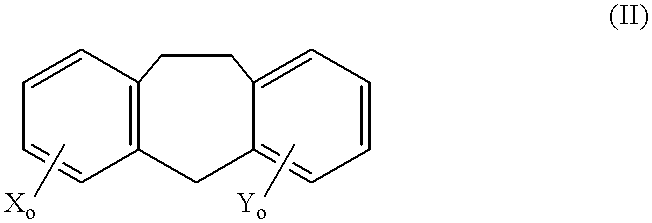Cancer treatment
a technology for cancer and treatment, applied in the field of cancer treatment, can solve the problems of incomplete understanding of the mechanisms by which cancer cells produce their effects, and achieve the effect of increasing the inflammatory response in the skin
- Summary
- Abstract
- Description
- Claims
- Application Information
AI Technical Summary
Benefits of technology
Problems solved by technology
Method used
Image
Examples
example i
This Example illustrates the tumor promoting and pro-inflammatory response effects of DPPE alone.
FIG. 1 shows the tumor-promoting effect DPPE (1 mg / kg or 4 mg / M.sup.2) given subcutaneously once daily.times.3, to seven DBA / 2 mice inoculated subcutaneously with 2.times.10.sup.2 L5178Y lymphoma cells 48 hours previously. A second group of 7 tumor cell-inoculated mice served as controls (saline injections, once daily.times.1). By day 14, 7 / 7 DPPE treated animals had palpable tumors as compared to 4 / 7 controls. At the end of 4 weeks, 6 / 7 controls had tumors with an aggregate surface area of 14.5 cm.sup.2 (mean=2.1.+-.0.8 cm.sup.2 / animal), while 7 / 7 DPPE-treated animals had tumors with an aggregate surface area of 38.4 cm.sup.2 (mean=5.5.+-.0.7 cm.sup.2 / animal). Thus, the tumor burden of DPPE-treated animals was approximately 2.5-fold greater than that of controls.
To investigate any effect of DPPE to increase PMA-induced inflammation in the same strain of mice (DBA / 2), groups of 3 anima...
example ii
This Example shows the H.sub.IC binding and tumor promoting effects of certain compounds and the antiproliferative effect of DPPE and certain compounds.
FIG. 2 shows the potency of two tricyclic agents, namely amitriptyline and doxepin, to compete for .sup.3 H-DPPE binding in liver microsomes. The K.sub.d value for DPPE is 65 nM while the K.sub.1 for doxepin is 5 .mu.M and for amitriptyline is 10 .mu.M. Doxepin and fluoxetine also compete for .sup.3 H-histamine binding to H.sub.IC in brain membranes (K.sub.f =10 .mu.M; FIG. 3).
FIG. 4 demonstrates the tumor-promoting effects of the tricyclic agent, amitriptyline, and the non-tricyclic agent, fluoxeting, in C3H mice injected subcutaneously into the gluteal region with 1.times.10.sup.5 C-3 fibrosarcoma cells. The doses employed were equivalent to therapeutic human doses (80 mg / M.sup.2 for amitriptyline and 20-40 mg / M.sup.2 for fluoxetine). The experiments were blinded so that the individual measuring the first appearance of palpable tum...
example iii
This Example illustrates the chemical synthesis of N,N-diethyl-2-[4-(4'-fluorophenone)phenoxy] ethanamine.
Diethylaminoethyl chloride.HCl (2 grams) was dissolved in 50 ml H.sub.2 O made basic with potassium hydroxide, extracted four times with 25 ml toluene to form the base and dried overnight in the presence of Na.sub.2 SO.sub.4. Five grams of 4-fluoro-4'-hydroxy-benzophenone was added to a heated mixture of 50 ml of distilled toluene containing sodium hydride (600 mg). The DEAE base (step 1) was added drop-wise to the benzophenone / toluene and the mixture was refluxed for twenty hours. The mixture was cooled to room temperature and then washed three times with approximately 150 ml of toluene. The toluene wash was taken to dryness. The resulting precipitate was taken up in ethanol and was recrystallized using etheral.HCl. The crystallization was repeated a second time.
Thin layer chromatography of the resulting crystals; showed a single product with a melting point of 128.degree. C., ...
PUM
| Property | Measurement | Unit |
|---|---|---|
| time | aaaaa | aaaaa |
| time | aaaaa | aaaaa |
| chemical structures | aaaaa | aaaaa |
Abstract
Description
Claims
Application Information
 Login to View More
Login to View More - R&D
- Intellectual Property
- Life Sciences
- Materials
- Tech Scout
- Unparalleled Data Quality
- Higher Quality Content
- 60% Fewer Hallucinations
Browse by: Latest US Patents, China's latest patents, Technical Efficacy Thesaurus, Application Domain, Technology Topic, Popular Technical Reports.
© 2025 PatSnap. All rights reserved.Legal|Privacy policy|Modern Slavery Act Transparency Statement|Sitemap|About US| Contact US: help@patsnap.com



